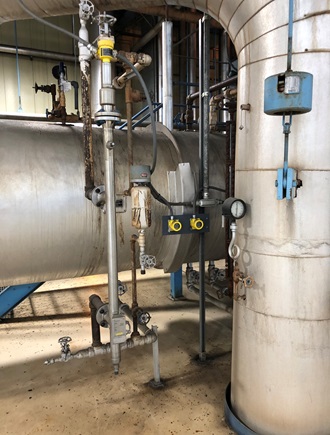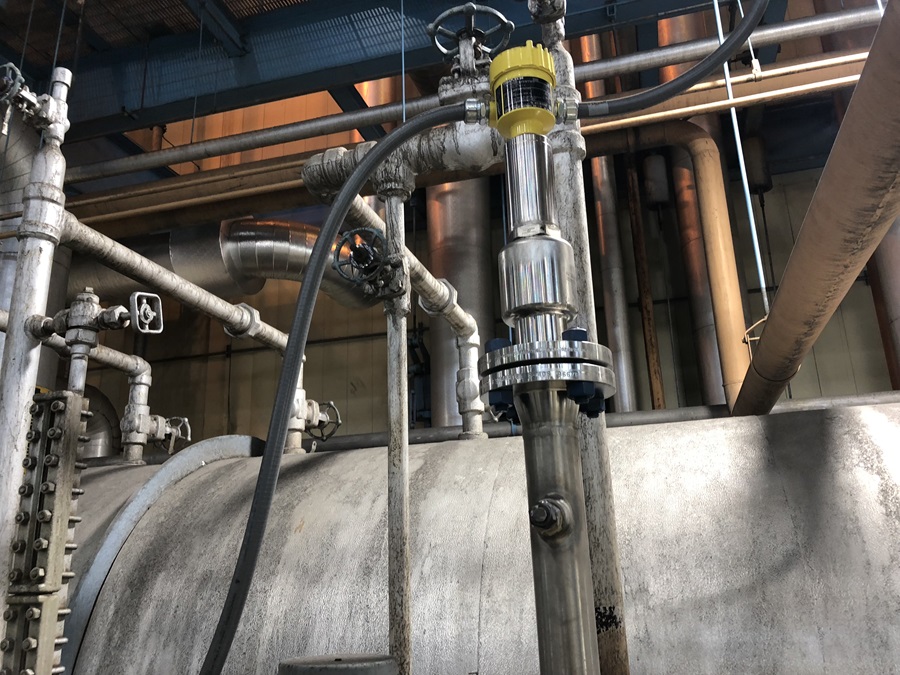Steam boiler drum level measurement technology comparison: Differential pressure vs. guided wave radar
Steam boiler drums are commonly used in refineries, power plants, and petrochemical facilities around the world. Optimizing the steam drum and using them as safely and efficiently as possible requires a reliable water level measurement.
If water levels in the steam boiler run too high, operators run the dangerous risk of an overfill, and water levels dropping too low can cause significant damage to expensive equipment, in addition to costs associated with the resultant downtime for repairs. Operators hold the responsibility for running these processes efficiently by keeping the water at an optimal, high level while maintaining the highest regard for safety.
The American Society of Mechanical Engineers (ASME) International Boiler and Pressure Vessel Code (BPVC) outlines several acceptable technologies for water level measurement inside a boiler. The two most commonly used technologies on this list are differential pressure and guided wave radar.
Understanding the limitations of each technology and the factors affecting their reliability are important first steps in determining which level measurement technology should be used. This paper will discuss the differences between differential pressure and guided wave radar, summarizing their advantages and disadvantages for level measurement in boiler drums with a particular importance placed on increasing safety during startup and shutdown.
Understanding Steam Boiler Drums
Steam boilers use heat and pressure to turn water into steam, which is then transported through pipes to the equipment that is being heated. To conserve water and energy, steam boilers are often used in a series with incrementally increased pressures and temperatures at each stage.
The conditions inside steam boilers are extremely hot and highly pressurized to create saturated steam. Simply specifying a BPVC-approved level measurement sensor without fully understanding the instrument’s operating principle will lead to less than optimal control at best and unsafe operation at worst.
As water vaporizes and changes from steam to saturated steam, its density changes, which leads to challenges for level measurement technologies like differential pressure, which rely on a constant density to provide an accurate measurement. Additionally, level measurement technologies like guided wave radar experience slower pulse velocities moving through saturated steam, which can also lead to errors and unreliable measurements. The challenge is finding a solution that works using the available technology.
Differential Pressure Transmitters: The old standard
Differential pressure transmitters use a dual sided diaphragm that senses pressure from the bottom of the vessel on one side and from the top of the vessel on the other. These opposing pressure measurements push on opposite sides of the dual sided diaphragm, and the resultant measurement is the pressure difference, or differential pressure.
The differential pressure measurement can then be used to calculate a level using the hydrostatic pressure formula, which consists of three variables: pressure, density, and height. The sensor measures pressure, density is input as a constant by the customer, and the height is the level.
Hydrostatic equation
P = ρ ۰ g ۰ h
P = Pressure ρ = density g = gravity h = height (level)
Accurate level measurements using differential pressure are dependent on a consistent density. However, when it comes to steam boilers, a consistent density is rarely the case. During startup and shutdown, the air space in the vessel undergoes a significant density change as temperatures rise to upwards of 600° F, pressures reach 1500 psi, and steam becomes saturated steam.
As the air space goes from containing steam to saturated steam, its density can change by as much as 50 percent. This drastic change then translates to a level measurement error by nearly the same amount, assuming the differential pressure sensor is calibrated while the process isn’t running.
Operators who understand this concept often compensate by calibrating the differential pressure sensor at a specific operating condition. This practice greatly improves performance at that specific operating condition, but it still doesn’t eliminate measurement errors when the process fluctuates away from this stage of the operation.
Differential pressure sensors can also output measurement errors when the sensors’ capillaries are exposed to temperature swings over the course of a day. The fluid in these lines will expand or contract with temperature changes, which causes the pressure transmitter to output a slight change in level. This is a common issue with all differential pressure measurements, and it’s not exclusive to steam boiler drums.
Differential pressure sensors have been around a long time, and the measurement is a versatile, widely used technology for all types of applications, including many steam boiler applications around the world. However, many operations only run their steam boiler at a fraction of their full capacity because of the potential inaccuracies associated with the level measurement. With a different technology providing a better level measurement, steam boilers can operate more efficiently and more safely.
Guided Wave Radar: Improvements in an evolving technology
Guided wave radar repeatedly sends low amplitude, high-frequency microwave pulses at the speed of light along a probe, and the device calculates distance by measuring the time it takes for the pulse to reach the surface of the fluid and return.
Time-of-Flight Level Formula
d = (s ۰ t) / 2
d = distance (level) s = speed t = time
As long as the speed of light remains a constant, measurements with guided wave radar are only influenced by the dielectric constant, or reflective properties, of the fluid the sensor is measuring. Fluids with a higher dielectric constant will return a stronger signal to the sensor electronics while fluids with lower dielectric constants become more difficult to measure.
Under ambient conditions, water has a relatively high dielectric constant, so guided wave radar can easily measure level. As water temperature and pressures are raised inside a boiler, water’s dielectric constant drops by as much as 75 percent, but this significant drop has little to no effect on the return signal and the resultant measurement output.
If the only activities inside a boiler were rising temperatures and pressures, a guided wave radar capable of withstanding those conditions would be the ideal technology for steam boilers. However, as water inside the boiler is heated and pressurized, the airspace within is replaced with saturated steam, and saturated steam has different properties than the air it’s replacing.
The small change between air and saturated steam is significant enough to slow down the microwave signal and alter the measurement output. Since level measurements with guided wave radar are calculated using the signal’s time-of-flight, any unaccounted change in speed through the air space will result in a measurement error and significant underutilization of the steam boiler.
Fortunately, instrumentation manufacturers like VEGA have made significant advancements in guided wave radar technology to overcome errors like these and maximize level measurement accuracy inside steam boilers. Compensating for a known measurement error due to a change in the signal speed is simply a matter of knowing how much slower the signal is traveling and adjusting for the change in speed.
To determine the guided wave radar’s change in signal speed, VEGA guided wave radars use steam compensation technology. A small section near the top of the measurement probe is used to constantly evaluate how much slower the signal is traveling. By doing this, the sensor electronics knows how much slower the microwave signal is traveling down the probe and through the saturated steam.
The sensor electronics uses the change in speed and applies the slower speed to the entire measurement span, compensates for the change, and outputs an accurate level measurement. This adjustment happens in real time with each signal transmission, ensuring an accurate continuous level measurement, even during startup and shutdown.
When this technology is applied correctly, the reference section simultaneously verifies the instrument’s speed calculation and provides a more reliable, more accurate measurement. This technology is much less susceptible to measurement errors based on the changing conditions inside a steam boiler.
Conclusion
Accurate level measurements and steam boiler safety go hand in hand. Choosing a level measurement technology that can provide reliability and accuracy during each step of a boiler’s operation is of the utmost importance. Understanding a measurement technology’s operating principle is the first step in making a well-informed decision.
While differential pressure is an adequate method for level measurement in a steam boiler, changing densities in the air space make this method less accurate, and therefore, less reliable throughout each phase of a boiler’s operation. Conversely, guided wave radar is unaffected by the changing conditions inside a steam boiler due to the technological advancements that have been made to address the challenges of saturated steam.
By adding a guided wave radar to their steam boiler, operators can improve their ability to accurately track level throughout each phase of the boiler’s operation, enhancing safety and efficiency. After all, accurate and reliable level measurements can empower operators to run steam boilers at peak efficiency to save on energy costs.
Related products
Export this article
Download as PDFShare this article
Comments ({{comments.length}})
{{getCommentAuthor(comment, "Anonymous")}} {{comment.timestamp | date : "dd.MM.yyyy HH:mm" }}
{{comment.comment}}







